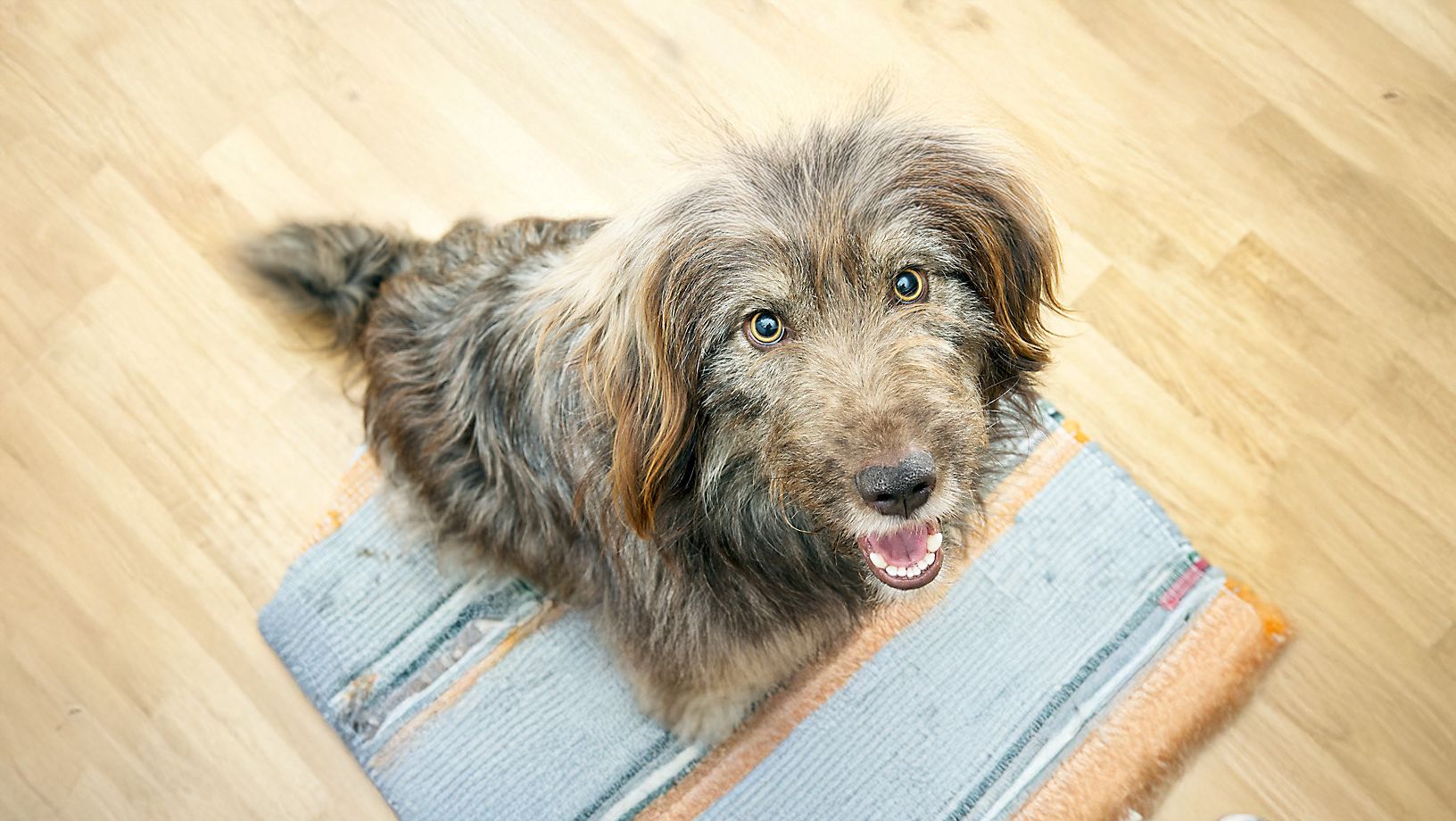Indoor Dog Activities & Training Tips for Your Pup

In this Article
It isn’t always possible to enjoy the great outdoors with your pup. Sometimes it rains, snows, is too cold and sometimes, even when the weather is pleasant, you may just want to enjoy a day indoors. Whatever the reason, your pup might still need some mental and physical stimulation or training to help keep them busy. If they can’t go on their normal walk or trip to the dog park, there are still great indoor dog activities and training practices that pet parents can do with their four-legged friends.
Indoor Dog Activities & Training Tips:
Some of the most classic indoor dog activities might include fetch, tug-of-war or teaching your pup to sit. Here are some other great indoor dog activities and training tips for your pup:
Doorbell Manners
Does your dog get a little excited when the doorbell goes off? Sometimes doorbells can be a sound that catches your dog off guard, has them on the defense or just gets them excited about whoever’s behind it. A great indoor training activity for dogs might be to teach them some doorbell etiquette.
Keep your dog safely out of the way by training them to sit on a special mat near the door when the bell rings. Start without the doorbell. Just practice walking to the front door and sending your dog to a mat placed nearby for this purpose. Reward them with a training treat every time they get it right.
Once your dog has the hang of this, add the doorbell. Ask someone who is already inside the house (so your dog doesn’t get too overexcited) to go outside and ring the doorbell. When the bell rings, try sending your dog to the mat and reward them.
Once your dog has mastered this step, progress to letting the person in while your dog stays on the mat. From there, you can progress to having other people ring the doorbell.
How to Stay
The “stay” cue is infinitely useful for keeping your dog out of trouble — but only if they listen no matter what is going on. Now is the time to practice getting your dog to “stay” despite any distractions.
Once your dog knows “stay” and can do it for 30 seconds to a minute under normal circumstances, you two can work on a more advanced version. First, give your dog the “stay” cue. Then start messing with him or her. Do a few jumping jacks, lie on the floor, walk away, open a door, have the kids run through the room, ring the doorbell…all the while continuing to redirect your dog to “stay.” With practice, your pet will become as unflappable as a guard at Buckingham Palace.
How to Come Here
The recall cue is a very important one for your pup’s safety. The ability to come to your side when called can make sure they stay safe in new situations, are easy to get a hold of if you drop their leash and stay close even with distractions.
Start by using positive reinforcement to introduce the verbal cue you wish to use with them. This could be “come here” or anything that you will use when you want them to follow that cue. Start by repeating this word and rewarding your dog when they respond to it. When first teaching “come,” it must be positive and reinforcing. Start by giving your dog multiple treats in a row, changing up the amount each time so that your pup figures out they can’t leave until they’re released.
Snuffle Mats/Puzzle Toys
Another great indoor dog activity, that doesn’t involve training, is a snuffle mat or puzzle toys for dogs! Pet parents sprinkle these mentally stimulating playthings with dog food or dog treats and then let their pup explore and problem-solve to find those snacks. This can be a great way to work your dog’s mind and get them thinking.
There are a ton of different ways to engage your dog’s mind and body without leaving the house. Don’t forget the classic indoor dog activities like fetch, tug of war and any other activity that brings your dog exercise and happiness.

